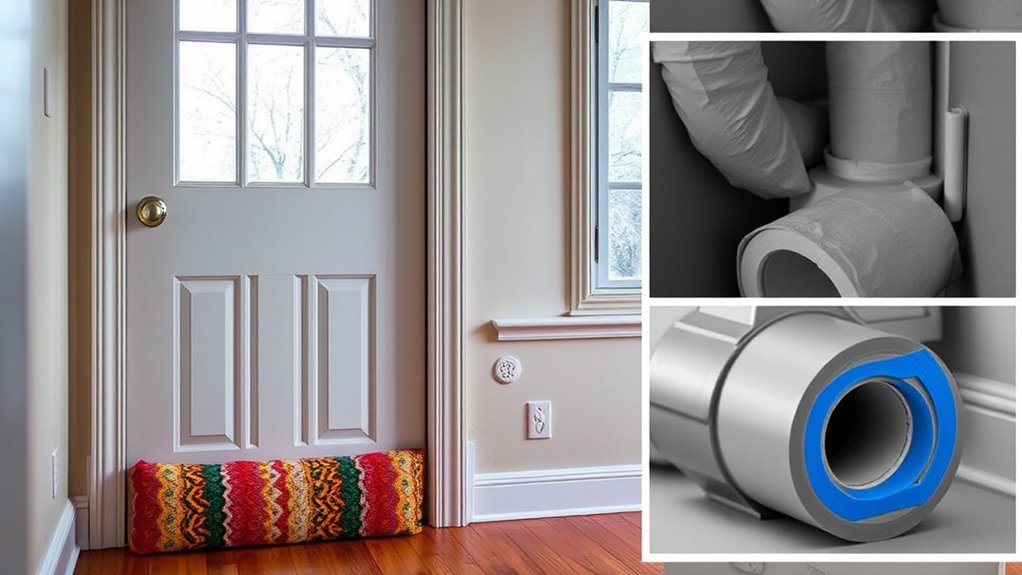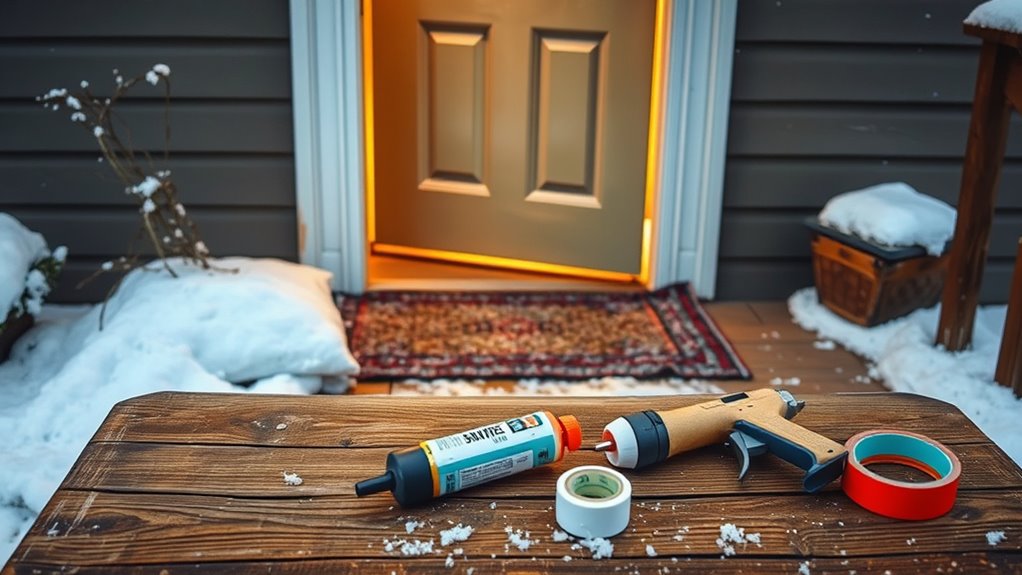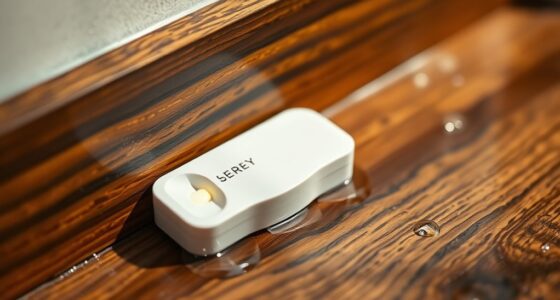To winter-proof your home on a budget, start by sealing drafts around windows and doors with weatherstripping or draft stoppers. Install inexpensive door sweeps to block cold air and add heavy curtains for extra insulation. Check your ducts for leaks and insulate exposed sections with foam sleeves or tape to prevent heat loss. These simple steps can make a big difference in staying warm and saving money—continue to explore ways to boost your home’s winter resilience.
Key Takeaways
- Seal gaps around windows and doors with weatherstripping and draft stoppers to prevent cold air infiltration.
- Install door sweeps and add heavy curtains to improve door insulation and block drafts.
- Inspect and seal duct leaks with foil tape or mastic, and insulate exposed ducts to boost efficiency.
- Add inexpensive foam boards to attic and seal attic hatches to reduce heat loss through the roof.
- These budget-friendly steps enhance comfort, lower energy bills, and effectively winter-proof your home.

Winter can be tough on your home and wallet, but you don’t need to spend a fortune to stay cozy and protected. Small upgrades and simple fixes can make a big difference in keeping cold air out and warm air in. One of the easiest and most cost-effective ways to improve your home’s winter resilience is sealing drafts. Walk around your house and check for gaps around windows and doors. You’ll often find tiny spaces where chilly air sneaks in. Using weatherstripping or draft stoppers can block these leaks quickly and cheaply. Weatherstripping is simple to install—just cut it to size and stick it around the edges of doors and windows. Draft stoppers, or door snakes, are also inexpensive and can be placed at the base of doors to prevent air from slipping underneath.
Seal gaps around windows and doors with weatherstripping or draft stoppers to keep your home warm and cozy.
Next, focus on your doors. Sometimes, a door isn’t the only problem—it’s the threshold or the frame that lets in cold air. Installing a door sweep is a straightforward way to seal the gap at the bottom of a door. You can find these for a few dollars at any hardware store. Just attach the sweep to the door’s bottom edge, and it’ll block drafts effectively. If your door itself feels drafty, consider adding a heavy curtain or an extra layer of fabric to insulate it further. This is a simple, affordable solution that can make your home feel warmer without complex renovations.
Ducts are often overlooked but play a vital role in your home’s heating efficiency. Leaky or poorly insulated ducts can waste a lot of heat, making your furnace work harder and increasing your energy bills. To tackle this on a budget, inspect your ductwork for obvious leaks or disconnected sections. Seal small gaps with foil tape or mastic sealant, which are affordable and easy to apply. Insulating exposed ducts in unheated spaces helps keep the warm air flowing where it’s needed most. Wrap these ducts with affordable foam insulation sleeves or tape, then secure them tightly. This not only boosts efficiency but also prevents heat loss, saving you money over time. Additionally, understanding the importance of contrast ratio in your home’s heating system can help optimize energy use and comfort levels.
Finally, don’t forget to check your home’s overall insulation. Adding inexpensive foam boards or weatherproofing your attic hatch can prevent heat from escaping through the roof. These small steps, combined with sealing drafts and insulating ducts, create an effective winter-proofing plan that’s budget-friendly. By focusing on drafts, doors, and ducts, you can considerably improve your home’s warmth and energy efficiency without breaking the bank. Keep these tips in mind, and you’ll stay cozy all winter long while keeping your expenses down.
Frequently Asked Questions
How Can I Identify Hidden Drafts in My Home?
You can identify hidden drafts by feeling around windows and doors for cold air or air leaks. Use a lit candle or incense stick; if the flame flickers or smoke moves, you’ve found a draft. Check behind furniture, outlets, and along baseboards. Also, observe indoor curtains or papers that flutter or fall when placed near suspected areas. These simple tests help you locate drafts to seal and save energy.
Are There Eco-Friendly Winter-Proofing Options?
Absolutely, eco-friendly winter-proofing options are a game-changer for your home! You can install biodegradable draft stoppers, use recycled insulation materials, or seal gaps with natural beeswax or plant-based caulks. These solutions not only save energy but also protect the environment. Plus, they’re budget-friendly and easy to apply. By choosing sustainable materials, you’re making a smart, green choice that keeps your home warm and eco-conscious all winter long.
How Often Should I Inspect My Doors and Windows?
You should inspect your doors and windows at least twice a year, ideally in fall and spring. Look for drafts, gaps, or cracks that could let cold air in. Check the seals and weatherstripping, and replace or repair them if needed. Regular inspections help you catch issues early, saving energy and money. Keep an eye out after heavy storms or temperature swings, as damage can occur anytime.
Can DIY Solutions Effectively Prevent Frozen Pipes?
Yes, DIY solutions can effectively prevent frozen pipes if you take the right steps. You should insulate exposed pipes, especially those in unheated areas, using foam or pipe sleeves. Keep cabinet doors open to allow warm air circulation and let faucets drip slightly during extremely cold nights. Additionally, seal leaks around windows and doors to maintain indoor warmth. These simple actions can considerably reduce the risk of frozen pipes and costly repairs.
What Are Cost-Effective Ways to Insulate My Attic?
You can insulate your attic cost-effectively by installing fiberglass or foam board insulation between the rafters. Seal any gaps with caulk or weatherstripping to prevent heat loss. Use affordable spray foam for tricky spots. Additionally, adding a radiant barrier beneath the roof can reflect heat back into your home. These DIY methods help keep your attic warmer without breaking the bank.
Conclusion
With a little effort and smart fixes, you can keep your home warm without breaking the bank. Tackling drafts and sealing ducts costs less than you think, yet offers comfort that feels priceless. As winter’s chill looms outside, your cozy, budget-friendly improvements stand in stark contrast to expensive repairs or high energy bills. Stay proactive, save money, and enjoy a warm house—because sometimes, the simplest fixes make the biggest difference.









